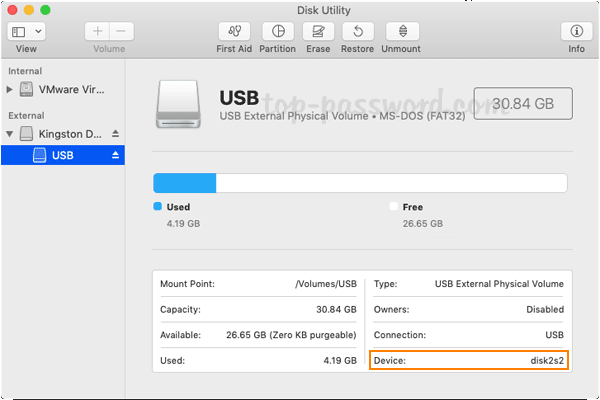

- #MAKE A RECOVERY DISK FOR MAC UPDATE#
- #MAKE A RECOVERY DISK FOR MAC ARCHIVE#
- #MAKE A RECOVERY DISK FOR MAC FREE#
#MAKE A RECOVERY DISK FOR MAC ARCHIVE#
Clone a suitable Recovery HD volume from an archive of the Recovery HD volume or another disk (such as the startup disk) onto the newly-created Recovery HD volume.Create a new volume named Recovery HD using the 1GB of borrowed space.Resize the donor volume to (size of the donor volume) - 1GB.Perform the equivalent of Disk Utility's "Verify disk" tool.When you click the button to create a new Recovery HD volume, CCC will do the following: No data will be harmed on the donor disk, it will simply be resized so some space can be allocated for the new Recovery HD volume. This documentation will refer to the chosen disk as the "donor" disk.
#MAKE A RECOVERY DISK FOR MAC FREE#
The Recovery HD volume is approximately 650MB, so to create a new Recovery HD volume, you must choose a volume on your disk that has at least 1GB of free space available. See this CCC Kbase article for additional details. Creation of recovery volumes on these devices must be done prior to the creation of these "virtual" volumes.

Note: You cannot create a Recovery volume on Fusion or RAID volumes. Do NOT attempt to create a Recovery HD volume on a Drobo device. Note: Drobo devices do not support dynamic volume resizing ( reference), and therefore cannot accept a Recovery HD volume.
The Recovery HD cloning tasks described below are not applicable to APFS-formatted destinations, CCC takes care of all of this for you without requiring any additional steps.
#MAKE A RECOVERY DISK FOR MAC UPDATE#
CCC automatically manages the special "helper" volumes on APFS-formatted destinationsĬCC will automatically create and update the Preboot and Recovery helper volumes on an APFS-formatted destination volume. CCC's Disk Center also offers the ability to create a new Recovery HD volume on volumes formatted with Apple's legacy filesystem, HFS+. This archive can later be restored to another Recovery HD volume. When performing a backup of a macOS volume, Carbon Copy Cloner automatically archives the Recovery HD volume that is associated with the source volume. The primary purpose of the Recovery HD volume is to offer a method to reinstall macOS. The macOS Installer creates a hidden volume on your startup disk named "Recovery HD". Watch a video of this tutorial on YouTube


 0 kommentar(er)
0 kommentar(er)
